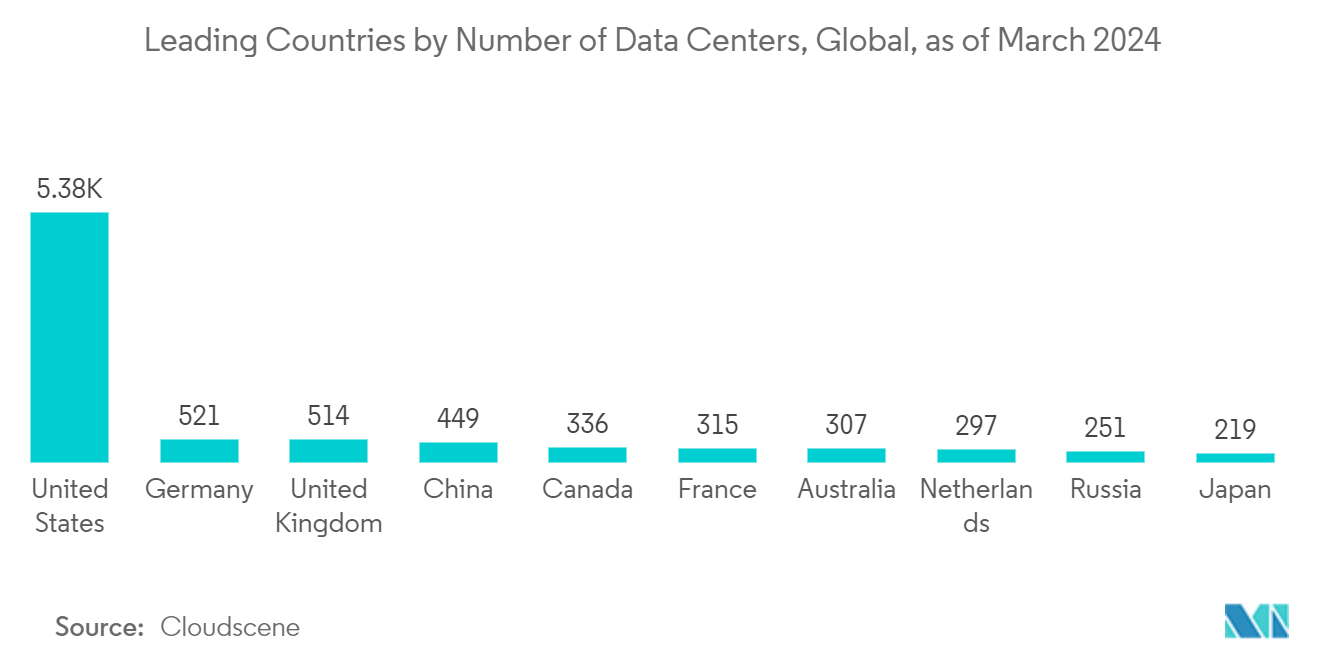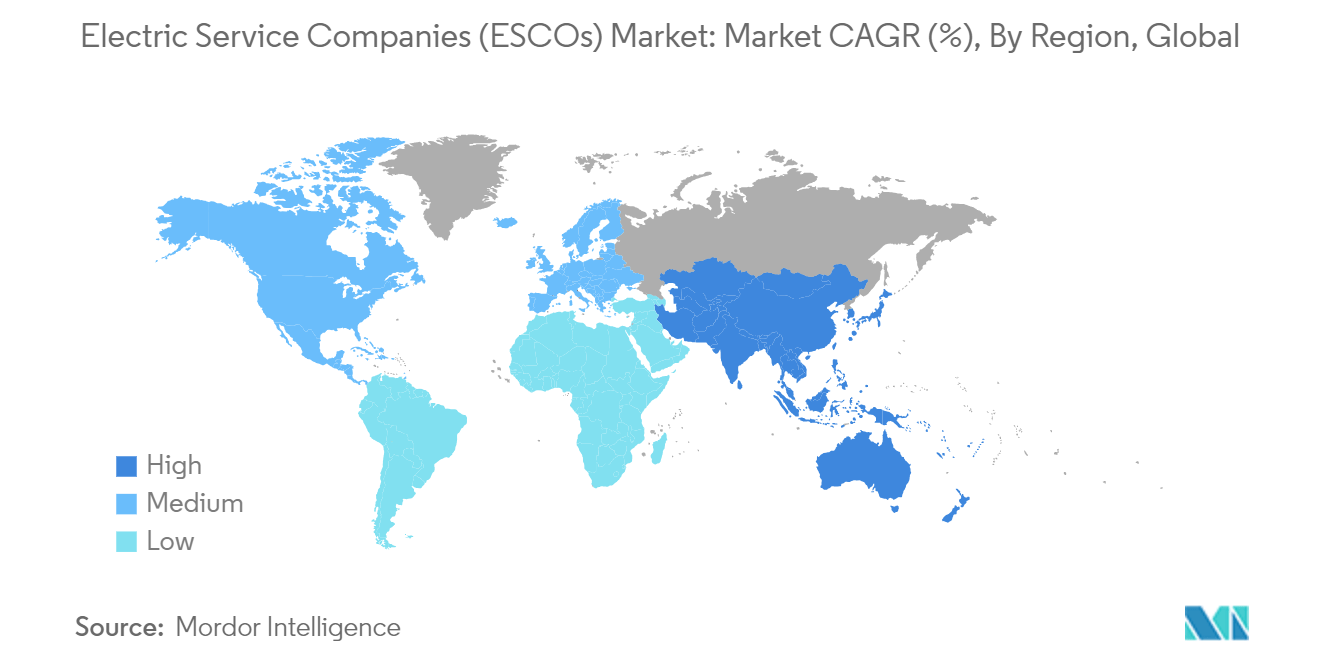Market Trends of Electric Service Companies (ESCOs) Industry
The Commercial Segment is Anticipated to Drive the Demand for the Market Studied
- Airports, data centers, restaurants, hotels, offices, warehouses, and retail stores dominate the commercial segment as primary customers. ESCOs specialize in designing, installing, maintaining, and repairing electrical systems for these establishments. Their services include upgrading existing lighting systems, installing and upgrading electrical panels, handling wiring or rewiring projects, remodeling, setting up indoor and outdoor lighting, and updating or installing security and motion detection systems. All these services prioritize maximum energy efficiency, enhanced functionality, and strict adherence to safety regulations.
- ECSOs offer tailored solutions, including energy audits, efficiency upgrades, and renewable energy integration, to help data centers reduce costs and minimize their environmental impact. The increase in data center investments will likely drive the demand for the market studied. For instance, according to Cloudscene, as of March 2024, there were 5,381 data centers in the United States, the most of any country worldwide. 521 were in Germany, while 514 were in the United Kingdom.
- The growing demand for data centers is anticipated to offer growth opportunities to the vendors operating in the market studied. According to NASSCOM (India), the data center market investment will reach approximately USD 4.6 billion in 2025. It is primarily driven by India's growing emphasis on digitization, increased cloud computing demands, government digitalization initiatives, and localization by digital service providers.
- In June 2024, Google announced a significant investment plan to expand its data center campuses in Virginia and Indiana. Google has been significantly investing in expanding its data center footprint in the United States to power its cloud computing infrastructure and AI initiatives. The company announced an investment worth USD 3 billion, with USD 1 billion allocated to expand three existing data centers in the United States. This investment is anticipated to bring Google's total investment to over USD 4 billion.
- Moreover, in January 2024, Vantage Data Centers, a provider of hyperscale data centers, announced a USD 6.4 billion equity investment led by investment vehicles managed by DigitalBridgeGroup Inc., a global alternative asset manager committed to investing in digital infrastructure, and Silver Lake. These investments are anticipated to accelerate and extend Vantage's strategic priorities across North America and EMEA to partner with global hyperscalers in meeting unprecedented cloud and AI demand.
- ESCOs enable retailers to conduct energy audits, leverage advanced technologies, and access financing solutions to optimize energy consumption and reduce carbon footprints. By integrating renewable energy sources and sophisticated energy management systems, ESCOs enhance their value proposition. As retail stores emphasize operational efficiency and cost reduction, ESCOs are crucial partners in achieving these goals.

Asia-Pacific Region is Expected to Witness Robust Growth
- China is anticipated to remain the region's most significant electric service market, with substantial investments in coal and renewable energy sources, including solar and wind. The government's commitment to decreasing carbon emissions and transitioning to cleaner energy forms has led to a surge in renewable energy projects. China's goals for carbon neutrality by 2060 are reshaping the market landscape and drawing investments and partnerships.
- According to the China Electricity Council (CEC), as of 2023, nearly 2,920 gigawatts of electricity generation capacity was installed in China. This was an increase from approximately 3,000 gigawatts in 2022. Most thermal power is coal-based and is the energy source with the country's most significant power generation capacity. Moreover, according to CEC, China had a total electricity consumption of around 9,220 terawatt hours in 2023. This was a notable increase compared to 2022, when consumption amounted to approximately 8,640 terawatt hours. This increase in electricity consumption will drive the country's market growth.
- India is one of the most dynamic markets for testing and inspection in the Asia-Pacific region, as it is one of the fastest emerging economies in the region. According to the Central Electricity Authority (CEA), India's highest energy capacity came from thermal energy, amounting to an installed capacity of over 236 thousand megawatts as of February 2023. Approximately 70% of the country's electricity generation was from thermal power plants. Coal dominated power supply, with 86% of the contribution coming from thermal power plants. Along with coal, thermal power is generated from lignite, diesel, and gas.
- In February 2024, the government of India announced it is actively expanding renewable energy capacity to reduce reliance on fossil fuels. It aims to meet 50% of electricity needs from renewable sources by 2030. Plans include increasing nuclear power capacity to achieve net-zero emissions by 2070. These energy and power sector developments will drive the market studied.
- Furthermore, according to the International Renewable Energy Agency (IRENA), the total capacity of renewable energy in the South Asian country of India was around 176 gigawatts in 2023. India's increasing renewable energy capacity is likely to offer opportunities for the growth of the studied market.
- India is also witnessing several investments in data centers. For instance, in November 2023, Adani Enterprises Ltd, the flagship of billionaire Gautam Adani, announced that it would spend around USD 1.5 billion on its data center business in the next three years. The company plans to build nine data centers and target a total capacity of 1 gigawatt by 2030. This would provide infrastructure for the booming demand for digital services in the nation of 1.4 billion people, who are already luring the most significant global firms, such as Amazon.com Inc. and Google. The increase in data center infrastructure is likely to boost the growth of the market studied.
- Electric vehicles (EVs) are also influencing the market, creating new demand for charging infrastructure and prompting electric service companies to adapt their offerings. Japan's automotive sector is undergoing a significant shift. Driven by Japan's ambitious targets of achieving net-zero emissions by 2050 and a 46% reduction by 2030, electric vehicles (EVs) are gaining traction. In line with this, the national government has outlined clear targets: aiming for EVs and plug-in hybrid electric vehicles (PHEVs) to constitute 20-30% of passenger car sales by 2030, with fuel cell vehicles (FCVs) targeted at 3%.
- Further emphasizing this shift, Japan's Ministry of Economy, Trade, and Industry (METI) has set an even more ambitious goal under the Green Growth Strategy: achieving a 100% sales share for EVs by 2035. Notably, hybrid electric vehicles (HEVs) are already a significant player, accounting for nearly 30% of total vehicle sales in Japan.


